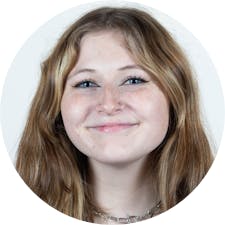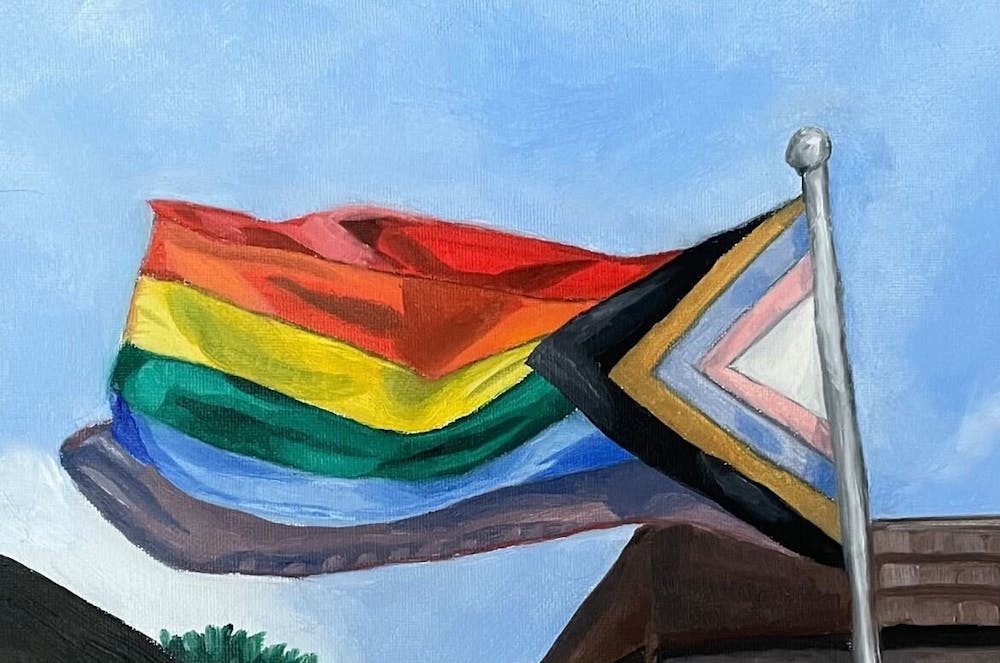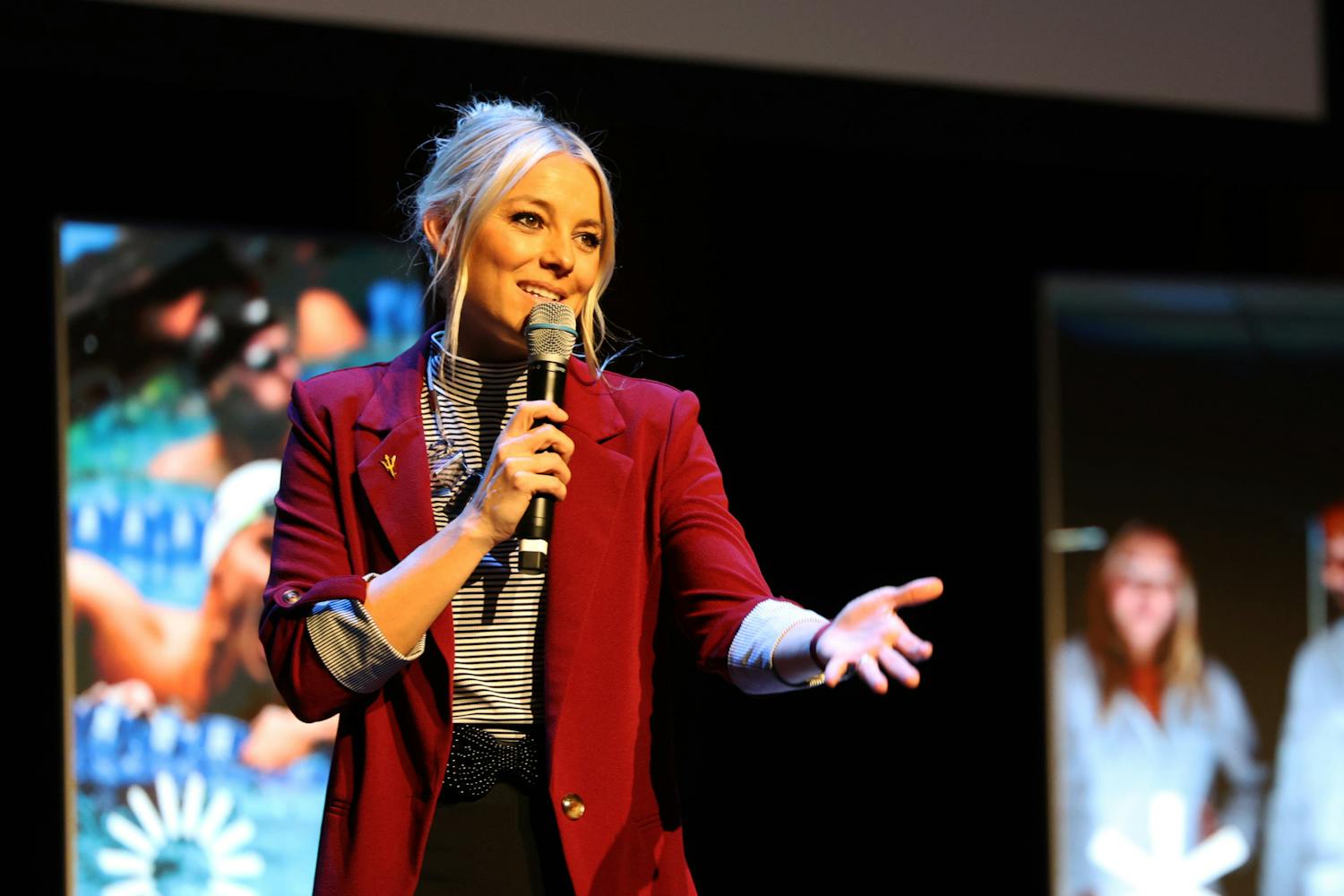For more than a decade, LGBTQ+ student organizations at ASU that make up Rainbow Coalition, including TransFam and GRADient, have been advocating for a dedicated physical space on campus where LGBTQ+ students can find community in a safe environment. But despite their ongoing efforts, the University administration has not fulfilled this request.
In a November meeting with the State Press, ASU President Michael Crow expressed no desire to create this space, stating that the University is "trying to focus on what people need to be successful and, right now, we don't think that needs separate space."
"We want every person in every building to be treated the same, and if you start building buildings for this group or that group, all of a sudden you're now saying, well, that's who can go into that building," Crow said, stressing ASU’s policy to be open to the public. "We don't want spaces where you can't come in here."
Despite Crow's reluctance to create a designated safe space, students like Anthony Scarmack, a sophomore studying journalism and vice president of ASU Confetti, express frustration at the University's inattentiveness to the voices of its queer students.
"I'm just kind of confused and almost feel disrespected," Scarmack said. "Your students are talking to you. Your students want something, and you're not listening to them. It feels like a slap in the face. You’re supposed to be a student-oriented campus."
READ MORE: Rainbow Coalition's decade-long journey to build a space for LGBTQ+ students
Recent incidents, including an altercation between a queer instructor and members of Turning Point USA last October and the hosting of two controversial Conservative figures on campus, spurred another movement by these organizations to establish this space — with or without the support of the University.
"There's been a culture developing that students have warned about for months, if not years," Ruby Maderafont, former facilitator of advocacy for ASU's Rainbow Coalition, said. "The first thing that comes to mind is the event that the now-defunct T.W. Lewis Center put on, which further emboldened people to undermine the fears of LGBTQ students on campus."
The concept of safe spaces is nothing new; the term originated in the feminist and gay liberation movements of the mid-1960s. Queer bars provided individuals with a place where they could go out safely and be surrounded by others facing similar discrimination in a political environment still plagued by anti-sodomy laws. These places were few and far-between, but they were essential for people to temporarily ignore outside social and political oppression.
With only 63% of Arizonans saying that homosexuality should be accepted according to a study done by the Pew Research Center, that refuge is still very much needed. Though the political environment has changed substantially since the 60s with queerness becoming more socially accepted and the legalization of gay marriage in 2015, the need for a safe community has not faded.
"(The misunderstanding) comes from this belief that the entire University is supposed to be a safe space. But you're talking about a historically marginalized group in a space where they are still the minority," Maderafont said. "Yes, progress has been made over the course of many decades, but there are still challenges to existing as a queer person on campus. Not every space is accepting, whether it's overt or not."
Nowadays, the term "safe space" is often surrounded by discussions about free speech on college campuses. The University of Chicago's 2016 message to incoming freshmen left no room for ambiguity in their stance, explicitly stating that safe spaces and trigger warnings would not be a part of their student's college experience.
"Our commitment to academic freedom means that we do not support so-called ‘trigger warnings,’ we do not cancel invited speakers because their topics might prove controversial, and we do not condone the creation of intellectual ‘safe spaces’ where individuals can retreat from ideas and perspectives at odds with their own," the letter read.
While the University of Chicago's statement may seem like a commitment to free speech and academic freedom, it greatly neglects that intellectual growth flourishes most in an environment where students feel safe and secure enough to have an open dialogue.
Much of the argument against safe spaces surrounding free speech stems from concerns about potentially isolating students from differing perspectives. But the point of establishing these spaces isn’t, and has never been, to shield students from uncomfortable ideas unlike their own; it's about fostering a basic sense of inclusion and respect that allows all students to thrive.
"Given the political polarization of queer identities, LGBTQ+ students are in a very vulnerable spot," Maderafont said. "A place on campus designated to help have these resources that cater to the specific needs of queer students would be beneficial. It would definitely speak to a wider need for acceptance and inclusion within the broader campus community at large."
Contrary to the criticisms often aimed at space spaces, they don’t serve as a manifestation of oversensitivity but rather an acknowledgment that, for marginalized groups, physical and psychological safety is very much intertwined.
Nearly one-third (32.6%) of LGBTQ+ students experienced bullying, harassment, or assault at college, compared to 18.9% of non-LGBTQ students, according to a report done by the Williams Institute at UCLA. As a result, LGBTQ+ individuals are more than twice as likely as heterosexual individuals to experience a mental health disorder and 2.5 times as likely to experience depression, substance misuse and anxiety, according to the American Psychiatric Association.
ASU establishing a safe space for its queer students wouldn't mark the first Arizona university to do so. Even ASU's biggest athletic rival, UA, established its LGBTQ+ Resource Center in 2007 with a mission to "build, sustain, and strengthen a safe, inclusive, and open environment” for its LGBTQ+ students and faculty.
The real problem doesn’t lie within the existence of a physical safe space — the real problem is a lack of empathy and understanding and not listening to the vulnerable individuals in your community when they tell you that there is something you could be doing to make them feel safer in pursuing their academic career.
It is vital for ASU to provide a space for its LGBTQ+ students where they can focus on their academic journeys while safely being themselves.
Safe spaces are not a concession, they are not a threat to free speech, they are not a community asking to be distanced from views that differ from their own; they are a demand for acknowledgment, respect, and equal footing. In creating these spaces and listening to their students, ASU has the opportunity to stand for progress and showcase its commitment to fostering an environment where everyone has the chance to thrive.
Edited by Walker Smith, Shane Brennan and Caera Learmonth.
Reach the reporter at sabuggle@asu.edu and follow @sadie_buggle on Twitter.
Like The State Press on Facebook and follow @statepress on Twitter.

Sadie Buggle is the Editor of the State Press Opinion Desk. This is her third semester working for the State Press after two semesters reporting for the Community and Culture Desk.




